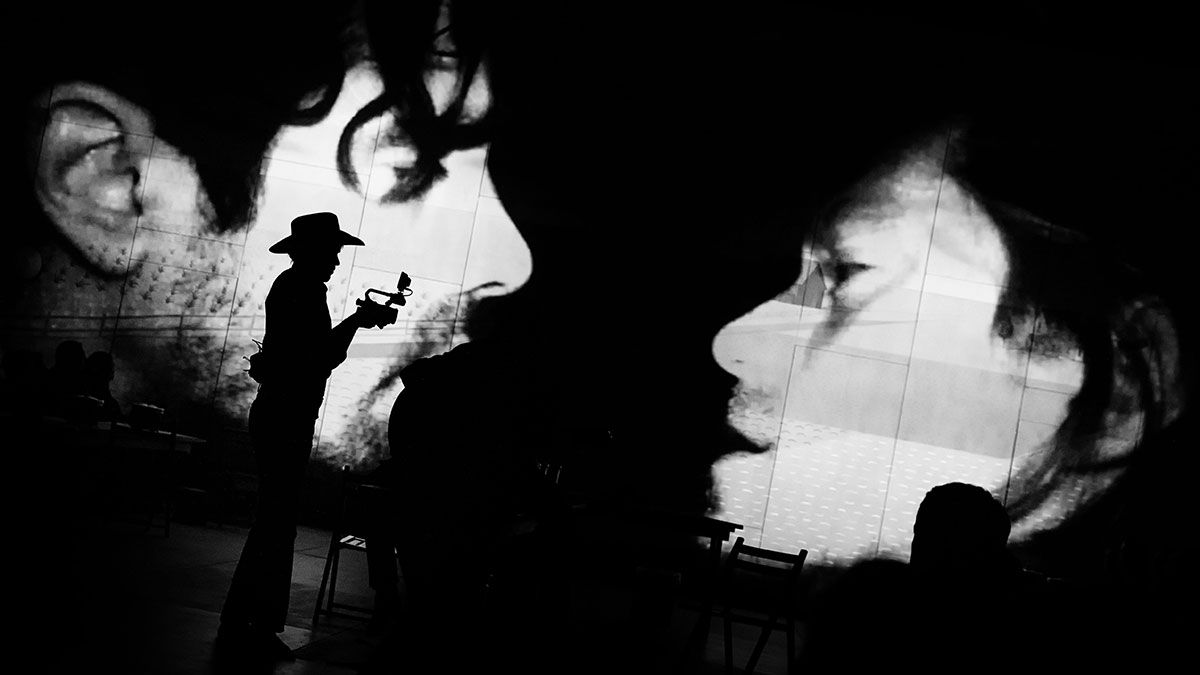Performance and Projection
Our students and faculty have a proclivity to cross boundaries with their art — often bringing their creativity to theater and other live performances.
From RIT to Broadway

The awe-inspiring projection designs in the Tony Award-winning Broadway revival of “Oklahoma!” were created by Josh Thorson, assistant professor in the School of Photographic Arts and Sciences. The interpretation of Rodgers and Hammerstein’s classic 1943 play went on a successful Broadway run at Circle in the Square Theater in 2019 and 2020.
Thorson’s work on the production earned him a Drama Desk Award nomination for Outstanding Projection Design. The Drama Desk is an organization of writers, editors, publishers and broadcasters that honors the best of New York City theater. His primary work can be found in the “smokehouse” and “dream ballet” scenes.
In the former, the first portion of the scene is a complete blackout, before a wireless infrared camera focuses on the two male protagonists, Curly and Jud, who are competing for the same girl, Laurey. The camera captures different close-up views of the characters that project onto a 55-foot-wide wall during the song “Poor Jud is Daid” and ends with a shot of the both of them.
The dream ballet scene is similar, using video to bring the audience closer to the “dream Laurey” dancer. Thorson employed live special effects to make a smoky effect that “amplifies the dream-like space.”
Thorson, graduate director of the MFA in Photography and Related Media, also executed “Oklahoma!” projection designs for runs at Bard College (2015) and St. Ann’s Warehouse in Brooklyn (2018).
Visualizing Music
Over the course of 29 years in the School of Film and Animation, Stephanie Maxwell, professor emerita, facilitated interdisciplinary and inter-university networking to bring artists of different disciplines together for collaborative art-making. An example is the RIT Philharmonic Orchestra’s “Fate and Destiny” performance. The concert featured a Maxwell-directed partnership between the orchestra and School of Film and Animation students, who created a visualization for some of the music. Their video combining analog, digital and imaginative creations accompanied a Beethoven composition to visually invoke the spirit of the famous composer’s sound.
Maxwell has spearheaded countless other similar live music-visualization collaborations, primarily with the University of Rochester’s Eastman School of Music. It’s provided students with many opportunities to incorporate their films and other videos into a live music environment.




